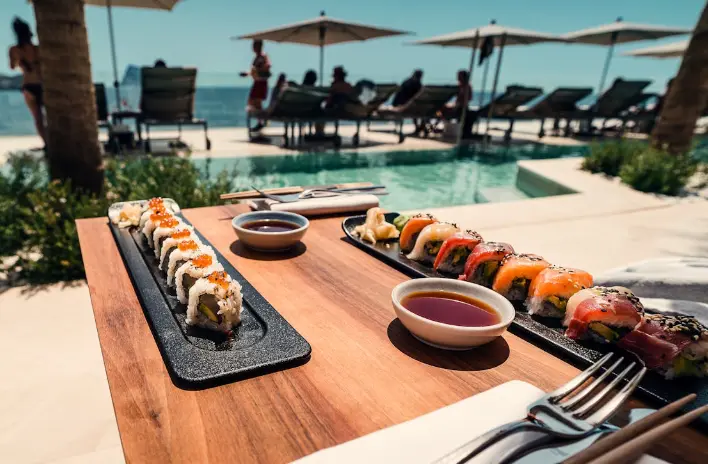How to Navigate the China Kitchen Menu
Eating in the China Kitchen is indeed an incredible but somewhat confusing journey particularly. When you are trying Chinese cuisine for the first time or not used to being region-specific. Besides a plethora of options, which may include from the quick and simple stir-fry techniques to the slow-cooked piece of meat. There is also a whole range at your disposal.
This guide is going to show you the key tips, the most ordered dishes, and the recent updates that will make your Chinese food experience more enjoyable.
Knowing the Chinese Cuisine
One of the remarkable things about the Chinese cuisine is its splendid assortment, which reflects its endless spaces and a long-lined history of various cultures.
The list of dishes is a myriad, as each and every place in the country has its own unique flavors, ingredients, and cooking methods. As you try to navigate the China Kitchen menu, these differences in taste and style will enable you to make informed choices.

Cantonese Cuisine
A great reputation is based on the quality of the dishes.
Examples of these are dim sum, roasted meats, and stir-fried vegetables. Cantonese food typically consists of lively dishes, the purity of which enhances the flavors of individual constituents.
Sichuan Cuisine
If you’re one of those whose into the smoky, hot taste of food, State diet is absolutely essential for you to go through.
The specific use of Sichuan black pepper, a spice that causes a feeling of burning in the mouth. By, the natives of Sichuan are known for the spicy nature of the food and the many layers of flavor. Foods like Korean Pro Chicken mapped in tofu and Twice-Cooked Pork are the material in this region.
Cuisine
Chinese cooking is beloved for its sweet and spicy dishes. Here, the classical method used is braising, and you will often find dishes cooked in soy sauce and refined sugar that give them a sweet, converted flavor.
Xiaolongbao, also known as (soup noodles) and stewed lamb, are the top dishes that give a perfect sense of this type of food.
Beijing Cuisine
Beijing cuisine, or Northern Chinese cuisine, emphasizes wheat-based food like noodles, buns, and pancakes. The renowned Peking Duck is mainly from this area and is usually the main course on the menus.
Hunan Cuisine
Another spicy cuisine, Hunan meals, indeed are more extreme and oiliest than those from Sichuan and sometimes include smoked and pickled foods. Chairman Mao’s Red-Braised Pork and stir-fried spicy fish are the items frequently ordered on the menu.
Popular Dishes to Look For
The China Kitchen menu serves some dishes which are generally present in virtually. All Chinese restaurants and familiarizing yourself with these items will be key in guiding your selections throughout the menu.
Since there are certain dishes that are served in most Chinese eateries, these dishes will help you recognize many places. Given below are some of the most popular dishes, their descriptions, and the reasons for their recommendation.
Dim Sum
One of the best times when you go out to have a Korean meal is when you get to a place that offers dim sum. Dim sum is a small breakfast menu of a Chinese culture which is consumed in birch Steamers.
The menu features steamed pasta dumplings, pork buns, spring rolls, and iced custard tarts. Mostly, restaurants serve dark food around brunch, a time when you can reconnect with family and friends while experimenting with a variety of flavors.
Peaked Duck
The Duck item in Beijing is a must-have. Chefs fry the duck by heating it until its texture gets flaky, and then they layer it with potatoes, melons, and a sweet bean sauce.
First, diners bury the duck in the pancake and then serve the vegetables on top of it. The restaurant in China known for its fancy food usually has it as the main dish.
Sweet and Sour Pork
This certainly is one of the most celebrated dishes in Chinese-American cuisine, and it is no less so in China: a classic plate that never falls from grace.
The combination of the succulent pork, imbued with a sweet, piquant sauce and pineapple or bell peppers, makes this food both luscious and gratifying.
Kung PAO Chicken
The Korean Pro Chicken is a savory stir-fry dish that hails from the Chinese Sichuan food culture. The dish contains chicken, peanuts, green goods, and chili peppers.
The phenomenon that is Sichuan chili pepper obstructed the sense of touch and the crunch of peanuts complemented each other in a very pleasing way.
Mapo Tofu
One of the paramount Sichuan cuisines, this plate harmonizes the light and delicate tofu with the hot and stimulating ground pork (or beef) plus hot pepper in a sauce. It’s an absolute go-to for the ones who want fiery tastes and authentic Chinese cooking.
Hot Pot
Hot pot is a group pot where people take their desired ingredients like chicken, vegetables, and tofu from a boiling plate of broth on the table. Disorders of its styles with broths and dipping sauces create diversity. This opportunity is both social and time-consuming, allowing you to have a diverse meal.
Fried Rice
Fried rice is a cheap, easy, and yet exciting dish that one can prepare in a lot of modifications. Be it traditional Hangzhou fried rice or contemporary versions bearing seafood and gallery, fried rice still remains on our menus as one of the most palatable options.

How to Order Decoding the China Kitchen Menu
Now that you have come a long way, learning the basics of Chinese cuisine. We will now move on to the main topic: how do you order expertly from a China Kitchen menu? Here are the best things to do in order to eat like a master.
Fusion Dishes
In recent years, there has been an increase in fusion cooking that takes Chinese cooking techniques and puts the flavors from other cuisines into it.
An illustration of this point is General Tso’s Chicken Tacos or Sichuan Peppercorn Burgers are become more familiar. These are dishes that add a twist to the traditional Chinese ingredients.
Plant-Based and Vegetarian Options
Due to the rise in the popularity of plant diets, various Chinese restaurants. Nowadays have introduced vegetarian or vegan variants of dishes.
Health-Conscious Menus
Some Chinese restaurants recognize the global demand for healthier food. Which is why they have also started offering low-sodium or gluten-free dishes.
Additionally, you could be presented with dishes that chefs previously fried but now bake, which are thicker broths and contain less oil.
Automatic Menus and QR Codes
Due to COVID-19, many citizens have decided to use electronic menus to cut down the risk of infection.
Right now, most cafés provide visitors with a QR card along with the dish menu for easy and effortless buying.
This is not to point out that it could make the job of caterers to change their menu choices all the day with the creation of new products and daily specials simpler, too.
Conclusion
The China Kitchen menu-book is a glimpse of one of the most ambiguous and thrilling gastronomes on earth. The quarter of the earth that appreciates the spicy and the other three quarters. That prefer the middle taste will realize the paramount importance of knowing the basic characteristics in Chinese culinary art.
As you will become familiar with the distinctions among various regions. The specialties of the best and modern courses, the dining and exploration of the extravagant China Kitchen menu is something you will appreciate.
Difference Table of the Content
| Aspect | Details | Benefits | Considerations |
|---|---|---|---|
| Understanding Chinese Cuisine | Rich history with regional variations and unique flavors | Enables informed choices when ordering | Requires openness to different taste profiles |
| Regional Cuisines | Overview of major regional styles (Cantonese, Sichuan, etc.) | Highlights diversity in Chinese food | Can be overwhelming with so many options |
| Popular Dishes | Includes dim sum, Peking duck, Kung Pao chicken, etc. | Familiarizes diners with must-try items | Some dishes may be more accessible than others |
| Fusion Dishes | Increasing trend of combining Chinese cooking with other cuisines | Offers innovative flavor combinations | May not appeal to purists of traditional Chinese food |
| Plant-Based Options | Rise of vegetarian and vegan dishes | Expands choices for health-conscious or plant-based eaters | Not all restaurants may offer these options |
| Health-Conscious Menus | Availability of low-sodium, gluten-free options | Supports healthier dining choices | Limited selections may be available |
| Ordering Tips | Guidance on navigating the menu, understanding dishes | Empowers diners to order confidently | Can vary by restaurant, so may need adjustments |
| Electronic Menus & QR Codes | Shift to digital menus for safety and convenience | Streamlines ordering process | Some diners may prefer traditional menus |
| Conclusion | Summary of the importance of understanding the menu | Encourages exploration of Chinese cuisine | Dining experience may vary based on location and staff |
